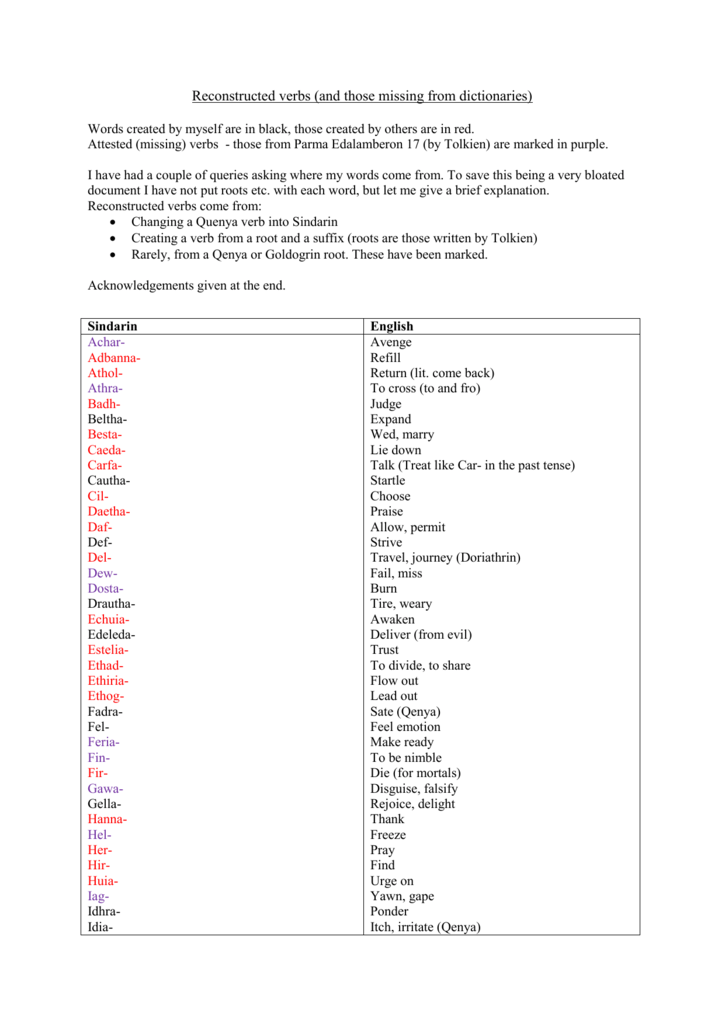This dialect of Sindarin was spoken by the Gondorians. It is found in many name of the upper-classes, because it is associated with court-life.
May 20, 2020 Keep in mind that I am not a Sindarin expert and these videos are just for fun; with that said, thank you for all the support so far and enjoy the 5th episode! Lesson 38 - How to make names (part 2) Lesson 39 - Gondorian & Mirkwood Sindarin Lesson 40 - Doriathrin Sindarin Lesson 41 - Liquid and stop mutations Lesson 42 - Elision Lesson 43 - Sindarin alphabet. Powered by Create your own unique website with. Jan 22, 2013 - Your Name In Sindarin Elvish - 5x7 Lord of the Rings Name Print. $10.00, via Etsy.
Villains
Names for the Villainous characters.
Personality
38how To Make Names (2)sindarin Lessons For Beginners
Names that describe one’s temperament.
Emotions
Names having to do with one’s emotions.
Physical Attributes
Anything that the 5 senses can tell us about a person, appearance, voice, scent, taste, or touch.
Abilities
Names dealing with things that one can do.
Occupation
Names based on job titles.
Celestial
Names describing the heavens.
Spiritual
Names dealing with Good and Evil, and perhaps one’s fate.
Weather
Names based on weather.
Flora
Names based on plants.
Fauna
Names based on animals.
Places
Names for people, referencing places.
Elements
Names based on the elements, minerals, or resources of nature.
Colors
Names based on words for colors.
Numbers
Names based on the order in which the children are born.
Weapons
Names for the wielders of weapons.
Lineage
Names about one’s lineage or ethnicity.
Miscellaneous
Names that don’t really fit into any category.
Suffix List
Feminine Suffixes
- -eth: ‘Female’ It simply makes a word a feminine name.
- -el: ‘Female’ It simply makes a word a feminine name.
- -il: ‘Female’ It simply makes a word a feminine name.
- -ril: ‘Female Doer’ It makes a noun or verb into a feminine name.
- -ien: ‘Female, She of…’ It can be combined with adjectives and nouns. It makes whatever is attached to it a feminine name. In Sindarin it tends to be a Father Name suffix as well.
- -iel: ‘Daughter, Daughter of…’ It can be combined with adjectives, nouns, and other suffixes. It’s the more commonly used suffix in Elven father names.
- -riel: ‘Daughter of ___ Doer’
- -rien: ‘Daughter of ___ Doer’
- sell: ‘Maiden, Girl, or Daughter.’ It’s used in names given when she is still a child. It can be used with nouns or adjectives, making a compound.
- gwend: ‘Virgin Maiden’ used in names given when she is not yet married. It can be used with nouns or adjectives, making a compound.
- ndîs: ‘Woman, Bride, Female Doer,’ used on verbs to indicate a female agent of the action, and can be used with adjectives or nouns to make a compound word.
- ndess: ‘Woman,’ used in the names given to a woman when she has reached adulthood. It can be used with nouns or adjectives, making a compound.
Masculine Name Suffixes
- -on: ‘Masculine’ It can be combined with adjectives and nouns. It makes whatever is attached to it a masculine name.
- -ron: ‘Male Doer’ It makes a noun or verb into a masculine name.
- -ion: ‘Son, Son of…’ It can be combined with adjectives, nouns, and other suffixes. It’s the more commonly used suffix in Elven father names.
- -rion: ‘Son of ___ Doer’
- ndîr: ‘Man/Male Doer,’ used in names given when he is an adult, or on verbs to indicate a male agent of the action. When used with nouns or adjectives, it makes a compound.
Gender-Neutral Name Suffixes

- -or: ‘Doer’ It can be used on anyone’s name.
- pen: ‘Person, One’ it can be used in anyone’s name, though it is rather impersonal. When used with a noun or adjective, it makes a compound.
If you would like a custom made name, go to Translation Requests and fill out the questionnaire.
OPENING THOUGHTS
Sindarin, the language of the Grey-Elves of Tolkien’s Middle Earth, has always been one of the most beautiful and interesting languages that Professor Tolkien created. Its fluid sounds and complex sound structure make it not only pleasing to the ear, but full of interesting technicalities and alterations. Unfortunately, what we know of Sindarin is far less than that of Quenya. If we rely on what we do have, and make some necessary generalizations, we can surmise how this language may have worked.
The Sindarin language is one of many mutations and odd usages. It is therefore often considered to be harder to learn than Quenya. While I do not think that this is true for the above reason, I do think that it is a harder language to learn. “Why” you might ask? Because what we do know is so very limited, that coming to secure conclusions is sometimes (and all too frequently) completely impossible. We also have the problem of Tolkien constantly changing his mind. With Quenya, very little radical change occurred once the basis of the language had been set down.
Unfortunately, the same is not true with Sindarin. This language underwent many revisions and changes throughout Tolkien’s life, leaving us with a good amount of information that needs updating and altering before it will fit well with mature Sindarin. While the fine points of Sindarin grammar are most certainly open to hot debate, I will try to present a picture here that includes all sides of the multiple arguments; allowing, when necessary, the student to choose which path they will follow. I understand that many people have their own opinions about Sindarin Grammar, and I am completely open to discussion of these topics. Please contact me if you wish to present an idea that I have not presented in this course. I am always open to suggestions. You will find my contact information at the bottom of this course.
Many students ask the questions “How long does it take to learn Sindarin?” and “Can I become fluent in it?”. To answer the second question first, it is not possible to become truly fluent in Sindarin. While one can progress to the point where one can construct translations with ease, it is impossible to learn Sindarin as a tongue that one could speak from day to day. The greatest hindrance to this is our lack of vocabulary. Even in translating short poems, it is often necessary to come up with rewordings and, sometimes, the construction of new words by derivational processes. Do not expect to take this course and come out of it speaking an Elvish language fluently; it will not happen. Cubase elements vst instruments free download.
Now for the first question. There really is no time table that one can set for learning Sindarin. Those who have taken a foreign language before will, of course, benefit from their introduction to linguistics. Unfortunately it is impossible to teach Sindarin in such a classroom style with our limited knowledge. We are therefore forced to teach Sindarin from a primarily linguistic point of view which means more vocabulary, and new ways of looking at things. This is not to discourage the prospective student, but rather to inform him/her as to what lies ahead. With effort and patience, a fair degree of capability can be developed in a rather short period of time.
EXTERNAL HISTORY
Tolkien’s earliest vision of the Sindarin language was developed in the trenches of World War One. At this time, Sindarin was known as Gnomish, and although it is the source of the language we now know as Sindarin, it had its distinct differences.

The next major step in the evolution of Sindarin was what Tolkien called Noldorin, or Exilic Noldorin. At this stage, it was Tolkien’s thought that “Noldorin” had developed separate from Quenya across the Sea, and only then came to Middle Earth with the Exile of the Noldor. This idea had its problems, however, and Tolkien realized them. How could two such varied languages as Quenya and Sindarin develop together in such close proximity? It was this then that led Tolkien to rethink his mythos. Linux mint. Eventually Tolkien concluded that it was the Sindar who spoke Sindarin. This gave him a more plausible linguistic scenario to work with, and allowed, in all fairness, a greater expansion of the Sindarin tongue than it would have ever achieved as the language of the Noldor.
INTERNAL HISTORY
At the waters of Cuiviénen and with the awakening of the Elves, or as they called themselves, Quendi, the entire linguistic history of Middle Earth began its course. It was at this time that the basis of both Sindarin and Quenya was spoken as the daily tongue which we call Primitive Quendian.
When Oromë found the Elves years later, they had already developed a significant tongue of their own. During the long march to the sea following Oromë, the Elves developed a tongue that we call Common Eldarin. At this time a break came into the linguistic scenario of Middle Earth. Some of the Elves, upon reaching the western shore refused to continue the journey “but … lingered in the coasts of Beleriand. There Thingol Grey Cloak of Doriath was their King, and in the long twilight their tongues had changed with the changefulness of mortal lands and had become far estranged from the speech of the Eldar from beyond the sea.” (RoTK Appendix F)
This estrangement lasted almost three and a half millenia, before the exiled Noldor crossed the sundering seas and met, in Beleriand, the Sindar. While the Sindarin tongue was not at this time fully developed into “Classical Sindarin” (the stage of Sindarin from LOTR), it was clearly on its separate way from that of Quenya. By Frodo’s time, Sindarin had developed into a very rich and flowing tongue which had become the language of most of the Elves of Middle Earth.
38 How To Make Names (2)sindarin Lessons Step By Step
THE COURSE (added 02/02/06)
The Sindarin Workbook consists of two parts; the first is the lessons, each of which cover an aspect of Sindarin grammar, and the second is the exercises, which are meant to complement the lessons by testing the student’s understanding. Some lessons also have more than one exercise devoted to it.
(Every student is able to progress at his/own pace through the Workbook, however we suggest that the student doesn’t try and cover as many lessons and exercises as possible within a few days. You’ll absorb more if you focus on a few at a time.)
38 How To Make Names (2)sindarin Lessons At Home
This Workbook is like any other Sindarin course out there — it will not attempt to teach the student everything about Sindarin (nor should any Sindarin courses claim to be able to teach the language fully or fluently), although it’ll do a good job covering most of what we currently know about the language. To expand his or her knowledge, the student is encouraged to refer to more than one course, with a credible Sindarin dictionary at hand, and study Tolkien’s linguistic works while reading the relevant articles. However, even just posting translations and corresponding in the Elvish101 forum and other discussion areas allows a student to better learn of Sindarin’s intricacies and nuances. (Please post if you feel like it.)
38how To Make Names (2)sindarin Lessons Near Me
If your exercise ‘isn’t considered complete’, it’s because either too many questions have incorrect answers or some have been left unanswered. If this is the case, you’ll be asked to redo the exercise. If resubmitted exercises haven’t been marked after a week, PM the person who originally marked it. If you’re at a loss as to what you did wrong, feel free to ask in the Elvish 101 forum for help, or contact the Languages staff.

